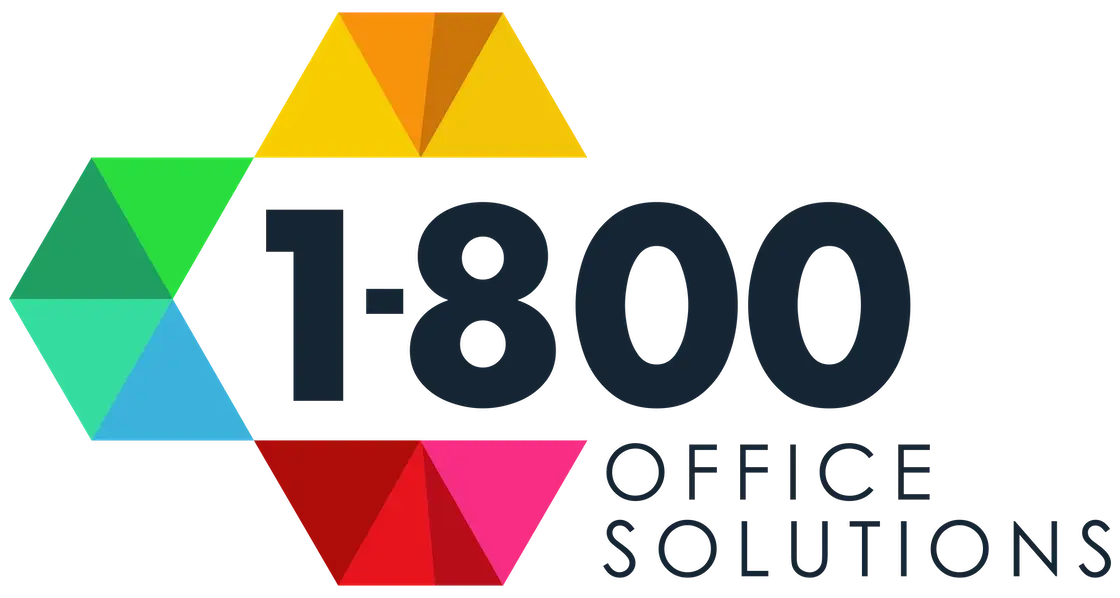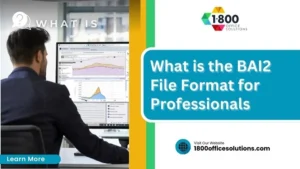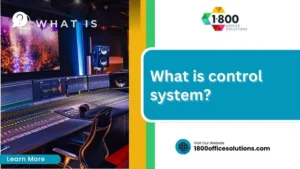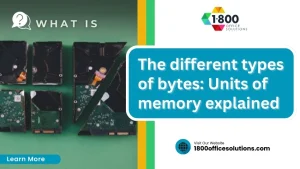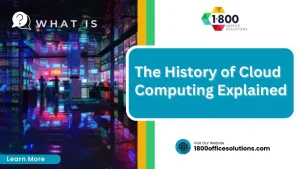What Is a Multifunction Printer and How Does It Work?
AI Overview:
Modern offices rely on speed, efficiency, and digital connectivity — and that’s exactly what multifunction printers (MFPs) deliver. This guide explores how MFPs combine printing, scanning, copying, and faxing into one smart device that transforms cluttered office workflows into streamlined, secure, and cost-effective operations.
Managing office document workflows efficiently is a constant challenge for businesses. Juggling separate machines for printing, scanning, and copying consumes valuable space, increases operational costs, and complicates supply management. This guide explains what a multifunction printer (MFP) is and how it consolidates these essential tasks into a single, powerful device to streamline your operations and boost productivity.
An MFP is an all-in-one device that combines a printer, scanner, copier, and often a fax machine into one central hub. Its purpose is to simplify how your team creates, digitizes, and shares information, reducing the clutter of multiple machines and reining in operational costs.
Your Office Workflow Command Center

At its heart, a multifunction printer integrates essential office functions into one efficient, network-connected machine. This eliminates the need for separate devices for printing reports, scanning invoices, and copying contracts, allowing all tasks to be handled from a single location. This consolidation is a primary driver for the global MFP market’s growth, which is projected to reach approximately $397.5 billion by 2032.
This centralization does more than just offer convenience; it fundamentally streamlines how information flows through your business. For instance, a law firm can use an MFP to scan client documents directly into a secure cloud folder, print case files, and copy evidence, all from one device. This creates a single point of management for everything from supplies and maintenance to critical network security.
Key Benefits of an MFP
Integrating a multifunction printer into your office delivers immediate and tangible advantages for businesses of any size. The primary benefits include:
- Space Savings: Replacing three or four bulky machines with a single unit frees up significant office real estate.
- Cost Efficiency: Purchasing and maintaining one device lowers expenses for energy, supplies, and service contracts.
- Improved Workflow: Teams can print, scan, and copy from a single, user-friendly interface, enhancing productivity by eliminating the need to move between different machines.
- Simplified Management: IT teams benefit from having only one device to monitor, secure, and support on the network.
A multifunction printer isn’t just hardware; it’s a strategic asset that connects your physical and digital workflows. It transforms a stack of paper into a secure, shareable digital file with just a few taps.
The copying function, a cornerstone of any MFP, has evolved significantly from standalone machines. Today’s MFPs provide advanced features like automatic double-sided copying (duplexing) and sorting multi-page documents into complete sets (collation).
Understanding this core technology provides a better appreciation for the power of these devices. To learn more about this specific function, our guide on what a photocopier is and how it works offers a detailed look. This integrated approach ensures every document-related task is handled efficiently from one central interface.
Breaking Down the Core MFP Capabilities

While the concept of an “all-in-one” device is straightforward, its true value lies in the technology that powers each function. To select a machine that genuinely enhances team performance, it is crucial to understand its capabilities and how effectively it performs them.
Every feature, from printing a simple memo to scanning a complex contract, directly impacts daily productivity. This section provides a practical guide to the core functions of a modern MFP, helping you evaluate any device you consider.
Professional Printing Performance
Printing is a fundamental MFP function, primarily driven by laser and inkjet technologies. Most businesses prefer laser printers for their speed and lower cost-per-page, making them ideal for high-volume, text-based documents. Inkjet printers, in contrast, excel at producing vibrant, high-resolution color images and graphics, though their operational costs can be higher.
Regardless of the technology, two key metrics determine performance:
- Print Speed (PPM): Pages Per Minute indicates how quickly the machine operates. A small office may be well-served by a printer with a speed of 20-30 PPM, whereas a high-traffic department will require 40-60 PPM or more to avoid bottlenecks.
- Print Resolution (DPI): Dots Per Inch measures sharpness and clarity. A resolution of 600 x 600 DPI is sufficient for internal reports, but for professional marketing materials, 1200 x 1200 DPI or higher is necessary.
Advanced Scanning and Digitization
The scanner transforms an MFP from a simple printer into a central hub for your digital workflow, bridging the gap between physical paper and digital systems. A flatbed scanner is ideal for items that cannot be fed through a roller, such as books or identification cards. For multi-page documents like invoices, the Automatic Document Feeder (ADF) is indispensable.
A modern MFP scanner doesn’t just take a picture of a document. It transforms that paper into smart, usable data you can search, edit, and plug right into your business software.
This functionality is enabled by intelligent software features that enhance productivity:
- Optical Character Recognition (OCR): This technology converts the text on a scanned page into a searchable PDF or an editable Word document, allowing users to find specific information within a document using keyword searches.
- Scan-to-Cloud: This feature enables users to send scanned documents directly to cloud services like Google Drive, Dropbox, or Microsoft OneDrive, which is essential for remote teams and digital archiving.
Efficient Copying and Document Finishing
Modern MFPs offer sophisticated copying features that produce professional-looking documents without manual intervention. These tools save significant time and improve the quality of the final output.
Two key features that make a significant difference are:
- Duplexing: This function automatically copies on both sides of the paper, reducing paper consumption by up to 50% and creating less bulky documents.
- Collation: This feature automatically arranges copied pages into complete, ordered sets, eliminating the tedious task of manual sorting for multi-page reports.
These built-in finishing options allow your team to produce client-ready proposals or training manuals directly from the MFP, streamlining the entire document lifecycle from a single device.
Exploring Advanced Features That Modernize Workflows
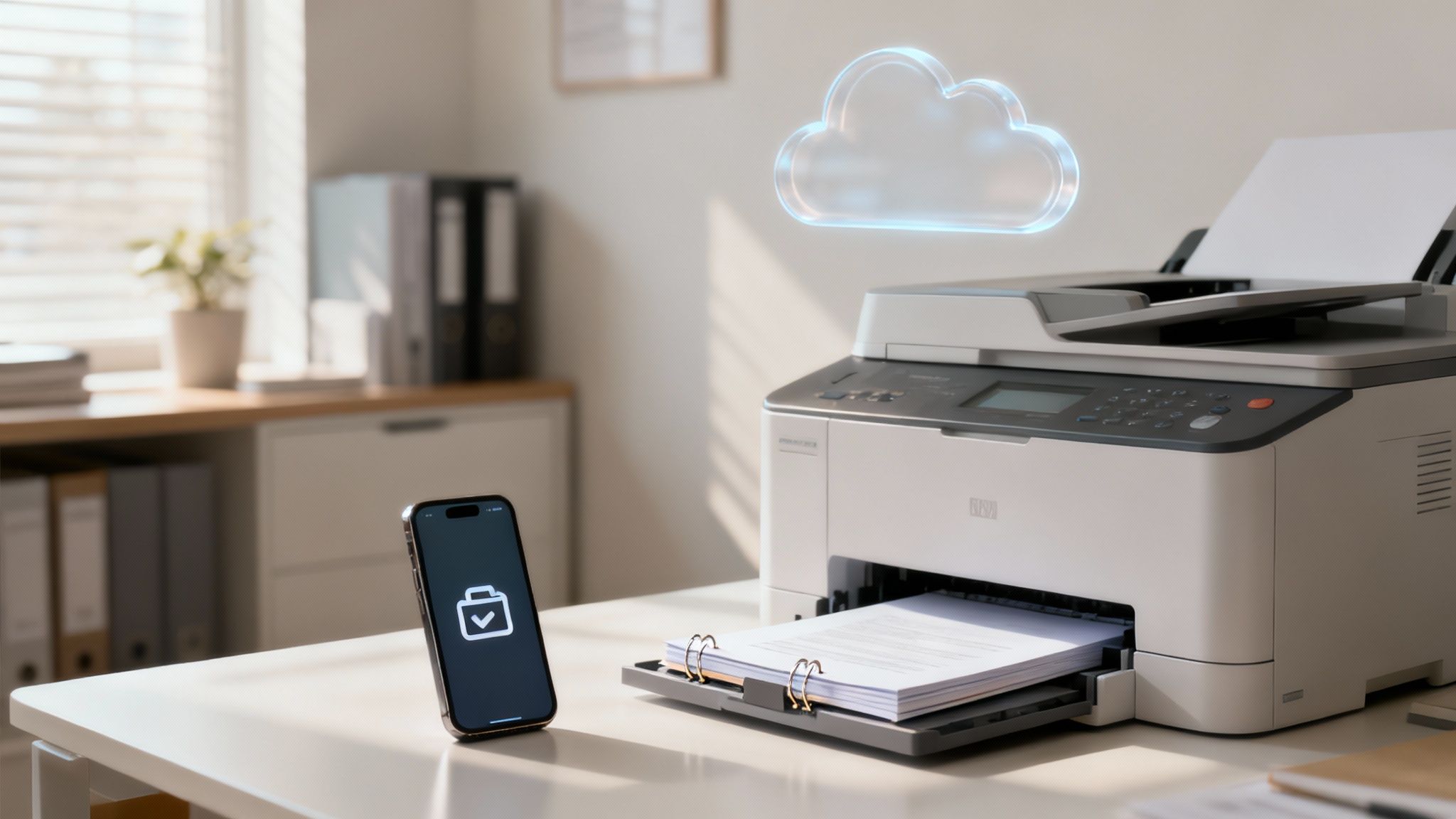
Modern multifunction printers are more than just hardware; they are intelligent, connected hubs that enhance digital collaboration and automate workflows. These advanced capabilities distinguish a contemporary MFP from older models, transforming it from a simple office machine into a significant productivity driver.
These features connect your team, secure your data, and convert manual tasks into automated processes, making the device a true workflow engine.
Seamless Network and Mobile Connectivity
A modern MFP is designed for a connected, flexible workforce. Standard Ethernet ports provide a stable, high-speed connection to your office network, while built-in Wi-Fi offers the freedom to place the device anywhere without requiring cables. This combination ensures reliable access for all users.
This flexibility extends beyond the physical office. With hybrid and remote work becoming standard, mobile printing is an essential feature. Today’s MFPs support a range of mobile and cloud solutions, enabling your team to print from virtually any location.
- Apple AirPrint & Mopria Print Service: These services provide seamless mobile printing for iOS and Android devices without requiring special drivers or applications.
- Dedicated Mobile Apps: Most major manufacturers offer proprietary apps that allow users to initiate scans, check toner levels, or manage print jobs from their smartphones.
Direct Cloud and DMS Integration
A significant advancement in MFP technology is its ability to integrate directly with business software. Instead of scanning a document to a computer and then manually uploading it, a modern MFP can send it directly to its destination in a single step.
This feature creates a seamless information pipeline between physical paperwork and digital systems. Businesses aiming to eliminate manual data entry and build secure digital archives will find this capability invaluable. You can learn more about how to find cloud-compatible copiers that can completely reshape your document strategy.
Think of a modern MFP not as a peripheral, but as an active node on your network. It’s a device that doesn’t just execute commands—it participates in your digital workflows by connecting directly to your core business applications.
Practical applications of this integration include:
- Cloud Storage Services: One-touch scanning to platforms like Google Drive, Dropbox, SharePoint, and OneDrive allows teams to instantly share scanned contracts or reports in project folders.
- Document Management Systems (DMS): Direct integration automates the filing, indexing, and routing of scanned documents into your company’s records system based on predefined rules.
Automated Document Finishing Options
Advanced MFPs also automate the physical production of documents. Finishing options are add-on modules or built-in features that handle tasks that previously required manual labor, resulting in professional documents with zero effort.
These finishers eliminate the need for separate equipment and save teams from manually collating and stapling large reports. They are particularly valuable for offices that regularly produce multi-page proposals, marketing materials, or client presentations.
Common finishing tools include:
- Automatic Stapling: The MFP can staple document sets in various positions as they are printed.
- Hole Punching: It can automatically punch two or three holes, making documents ready for binders.
- Booklet Creation: This feature folds and staples pages to create professional booklets and pamphlets.
- Saddle-Stitching: For high-end booklets, this option provides a refined binding along the spine.
MFP vs. Single-Function Devices: Which One is Right for You?
Choosing between an all-in-one MFP and a set of separate machines is a common office decision. The right choice depends on your team’s specific workflow, print volume, and equipment expectations. Understanding the trade-offs between a consolidated MFP and its single-function counterparts is key to making a sound investment.
For most businesses, the convenience of an MFP is a significant advantage, but there are scenarios where dedicated hardware remains the superior option.
The All-in-One Advantage vs. Dedicated Performance
The most apparent benefit of an MFP is its consolidated footprint. A single machine replaces a separate printer, scanner, and copier, saving space and simplifying management with one purchase price, one set of supplies, and one service contract.
This integrated approach is driving market trends, with projections showing that multifunction printers will capture a 54.1% share of the printer market by 2025. The overall market is expected to grow to nearly USD 129.8 billion by 2035, indicating a clear business preference for integrated devices. You can explore more about these market dynamics to see how MFPs are becoming the new office standard.
However, a single-function device often delivers superior specialized performance. For example, a dedicated high-volume scanner will typically outperform the scanner on a comparable MFP in speed and image quality. For a department digitizing thousands of documents daily, such specialized capability is a necessity, not a luxury.
A multifunction printer is like a Swiss Army knife—it handles a lot of different jobs pretty well. A single-function device is like a perfectly calibrated torque wrench—it does one specific job flawlessly. Your choice depends on whether you need everyday versatility or mission-critical specialization.
Differentiating MFPs From Other Specialized Equipment
It is important to distinguish MFPs from other specialized office equipment to avoid costly purchasing errors. Certain tasks require highly specialized gear that an MFP cannot replicate.
Two common examples are high-volume document scanners and wide-format plotters.
- High-Volume Document Scanners: These machines are built to digitize massive stacks of paper at high speeds, often processing hundreds of pages per minute. They are essential in industries like law, healthcare, and finance, where converting paper archives to digital records is a core business function. An MFP’s scanner is suitable for general office tasks but not for industrial-scale digitization.
- Wide-Format Printers (Plotters): Used in engineering, architecture, and marketing, these devices are designed to print on oversized media to produce blueprints, technical drawings, and banners. Plotters handle paper rolls and dimensions far beyond an MFP’s capability. While some MFPs support A3 (11×17 inch) paper, a plotter is required for anything larger.
The following table breaks down how these devices compare, highlighting their respective strengths to help you select the right tool for your office.
| Device Type | Primary Function | Ideal Business Use Case | Key Advantage |
|---|---|---|---|
| Multifunction Printer (MFP) | Combines printing, copying, scanning, and faxing in one unit. | General office environments needing a central hub for various document tasks. | Space-saving, cost-effective, and simplifies device management. |
| Single-Function Printer | Dedicated to printing documents. | Teams with very high print volumes or specific security/quality needs. | Optimized speed and performance for a single task; often lower cost. |
| Wide-Format Printer (Plotter) | Prints on oversized media like banners, blueprints, and posters. | Architecture, engineering, construction, and marketing firms. | Ability to handle large-scale formats (A2, A1, A0) that MFPs cannot. |
Ultimately, selecting the right machine requires an honest assessment of your daily operations. An MFP is the ideal central hub for most office workflows, but when your business relies on a high-volume, specialized task, a dedicated machine is the smarter investment.
Choosing the Right MFP for Your Business
Selecting the right multifunction printer involves more than comparing technical specifications. A strategic approach that considers your team’s daily workflow, budget, and long-term operational goals is essential. A well-chosen MFP can be a powerful productivity tool, while a poor choice can lead to frustration and hidden costs.
To avoid buyer’s remorse, match the machine’s capabilities to your actual business needs by evaluating factors such as print volume, technology, and the total cost of ownership.
This decision tree illustrates the initial choice between a standard MFP for general office tasks and more specialized equipment.
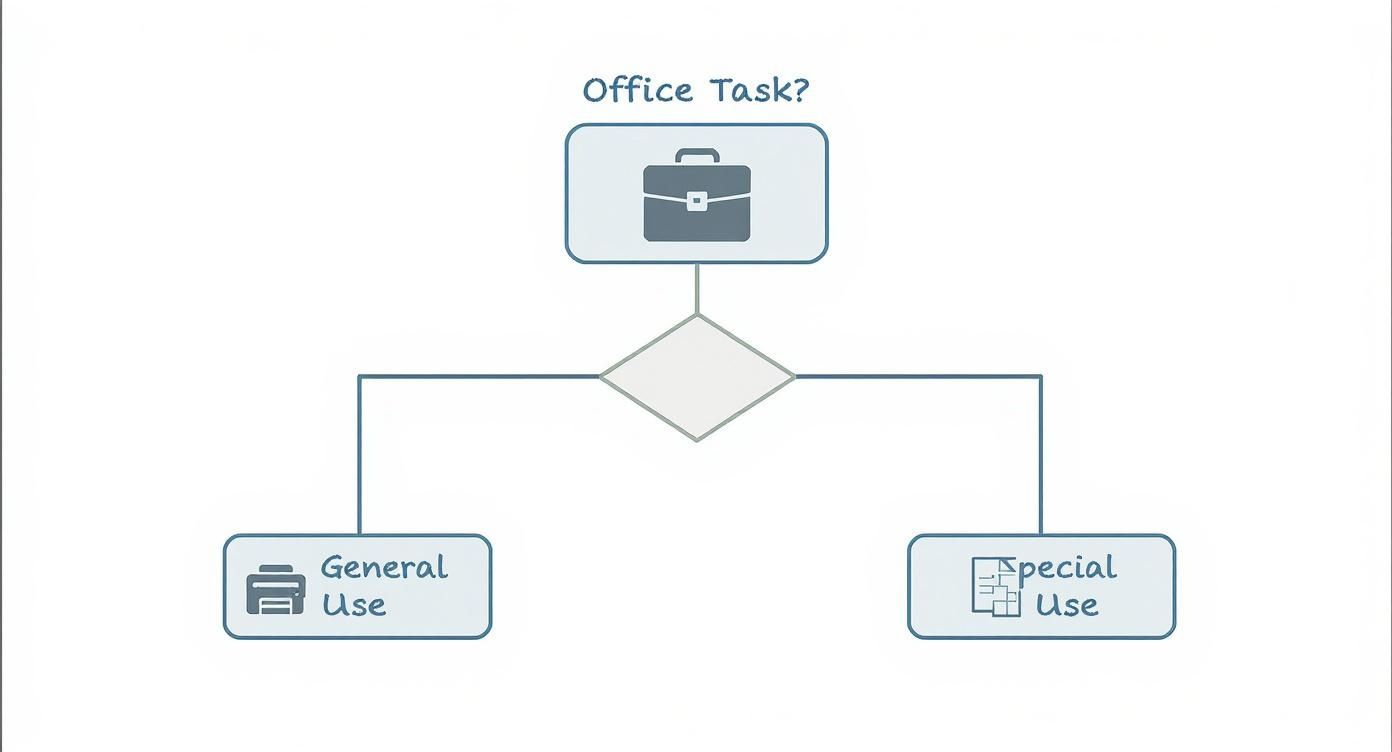
As shown, the first question should always address the primary function. This helps guide your decision toward either a versatile MFP or a dedicated machine designed for a specific purpose.
Matching Machine to Mission
The first step is to determine your print volume. Every MFP has a “recommended monthly print volume” and a “maximum monthly duty cycle.” The duty cycle represents the absolute maximum number of pages the machine can produce in a month, while the recommended volume is the ideal range for sustained, reliable performance.
Consistently exceeding the recommended volume can lead to premature wear and tear. For example, a small business printing a few hundred pages a week has different needs than a large accounting firm printing thousands of pages daily. Always choose an MFP with a recommended volume that is comfortably above your average output.
Understanding the Total Cost of Ownership
The initial purchase price is only part of the overall expense. The Total Cost of Ownership (TCO) provides a more accurate long-term financial picture and is the most critical metric to consider when evaluating a printer.
TCO isn’t just about the purchase price. It’s the sum of all costs over the machine’s life—including ink, toner, energy, maintenance, and repairs. A cheaper machine with expensive consumables can easily cost more in the long run.
To calculate an approximate TCO, consider the following:
- Cost of Consumables: Determine the price of toner or ink cartridges and their page yield to find your cost per page.
- Energy Consumption: Look for ENERGY STAR® certified models to minimize electricity costs.
- Maintenance and Service: Decide whether to pay for repairs as they arise or opt for a predictable service contract.
To Buy, To Lease, or To Manage
After identifying the right MFP, the next decision is the acquisition method. There are three primary options, each with different implications for your cash flow and operations.
- Purchasing: Buying the MFP outright makes it a company asset. This is a capital expense suitable for businesses with available cash that prefer to own their equipment.
- Leasing: This option provides access to a more powerful machine for a fixed monthly payment, preserving capital and simplifying budgeting. Maintenance is often included in the lease agreement.
- Managed Print Services (MPS): This all-inclusive approach involves a provider managing the device, supplies, maintenance, and monitoring for a single cost-per-page fee.
When choosing a multifunction printer, it’s worth thinking about how an approach like Managed Print Services can streamline your operations and trim down costs. This model is a game-changer for businesses that want to offload printer management and just focus on what they do best.
Market conditions can also influence this decision. The U.S. printer market experienced a dip in 2023 and 2024 as economic uncertainty led businesses to delay new hardware purchases. However, the long-term outlook remains strong, particularly for cloud-ready devices and high-end inkjets. You can dive deeper into these multifunction printer market trends to help shape your own acquisition strategy.
Essential Security and Maintenance Practices
A multifunction printer should be treated as a networked computer, not a simple office appliance. It handles sensitive company data daily and requires the same security and maintenance diligence as your servers. This is essential for protecting your business from significant risks.
Every document scanned, printed, or faxed is processed through the MFP’s internal hard drive and memory. An unsecured device can become a backdoor for security breaches, exposing confidential employee, client, and financial information.
Fortifying Your First Line of Defense
Securing your MFP begins with controlling who can access it and their permissions. A common and dangerous mistake is failing to change default administrator passwords. For instance, security researchers recently identified a critical vulnerability, CVE-2024-51978, that allowed attackers to generate default administrator passwords for multiple printer brands, granting them full control.
Implementing robust security protocols is non-negotiable.
- User Authentication: Require users to log in at the device using a PIN, swipe card, or network credentials to ensure only authorized individuals can access its functions.
- Data Encryption: Enable encryption for data in transit over the network and data stored on the MFP’s internal hard drive to make it unreadable to unauthorized parties.
- Secure Print Release: This feature holds print jobs in a secure queue until the sender authenticates at the device to release them, preventing sensitive documents from being left unattended in the output tray.
Proactive Maintenance for Maximum Uptime
In addition to security, consistent maintenance ensures your MFP remains a reliable workhorse rather than a source of frustration. A well-maintained device experiences fewer breakdowns, produces higher-quality output, and has a longer operational life. This involves managing consumables and addressing minor issues before they become major problems.
A regular maintenance schedule is the best insurance policy you can have for your MFP. It protects your investment, prevents expensive emergency repairs, and keeps your office workflows running like clockwork.
Regular upkeep includes monitoring toner and drum levels, cleaning rollers, and ensuring the device’s firmware is up-to-date. For businesses that depend heavily on their MFP, a formal service contract is a wise investment. For more information on developing a solid upkeep strategy, see our guide on the benefits of preventative maintenance for copiers.
Finally, consider the device’s entire lifecycle. When it is time to retire an old MFP, it cannot simply be discarded. Proper end-of-life management includes using reliable disposal services. Specialized companies offer professional printer, copier, and fax machine recycling and disposal services to handle this securely and responsibly.
Frequently Asked Questions About MFPs
Choosing new office technology always comes with questions. When you’re trying to figure out if an MFP is the right fit, getting quick and clear answers makes all the difference.
We’ve pulled together some of the most common questions businesses ask to help you feel confident about your decision.
MFP vs. All-in-One: What Is the Difference?
The terms "multifunction printer" (MFP) and "all-in-one" (AIO) are often used interchangeably, but there is a key distinction for business applications.
An MFP typically refers to a heavy-duty, enterprise-grade machine. These are larger, floor-standing units designed for the high-volume demands of a busy office and complex network environments. An AIO, in contrast, usually describes a smaller, desktop model suitable for a home office or a small business with lighter printing needs.
How to Calculate the Total Cost of Ownership
The initial purchase price is only the beginning. To understand the true financial impact, you must calculate the Total Cost of Ownership (TCO). This figure represents the actual cost of the machine over its lifespan and is a more intelligent way to budget.
To calculate TCO, sum all ongoing costs:
Cost Per Page: This includes ink or toner and the number of pages per cartridge.
Energy Use: Look for ENERGY STAR® ratings to estimate the impact on your utility bills.
Service Contracts: Factor in the cost of a plan covering routine maintenance and repairs.
Unexpected Repairs: It is prudent to budget for any fixes not covered by a service agreement.
Be careful with "great deals." A cheap MFP with pricey toner can easily cost you more over three to five years than a pricier model with a low cost per page. Always run the TCO numbers before you sign anything.
Laser vs. Inkjet: Which Is Better for a Business?
The choice between laser and inkjet technology depends on your primary use case. Neither is inherently better; the right one is the one that fits your office's workflow.
Choose a laser MFP if your team prints a large volume of text-heavy documents. Laser technology excels at producing sharp text at high speeds and typically offers a much lower cost per page, which can result in significant savings in a busy office.
Opt for an inkjet MFP if your business requires high-quality color images, such as for marketing materials or photo prints. Inkjet printers generally have a lower upfront cost and are superior at blending colors to create vibrant, detailed graphics, making them ideal for creative work.
Ready to find the multifunction printer that perfectly aligns with your business needs and budget? The experts at 1-800 Office Solutions can help. We offer flexible leasing options, nationwide support, and over 40 years of experience in matching businesses with the right technology. Get a fast, free quote today!



